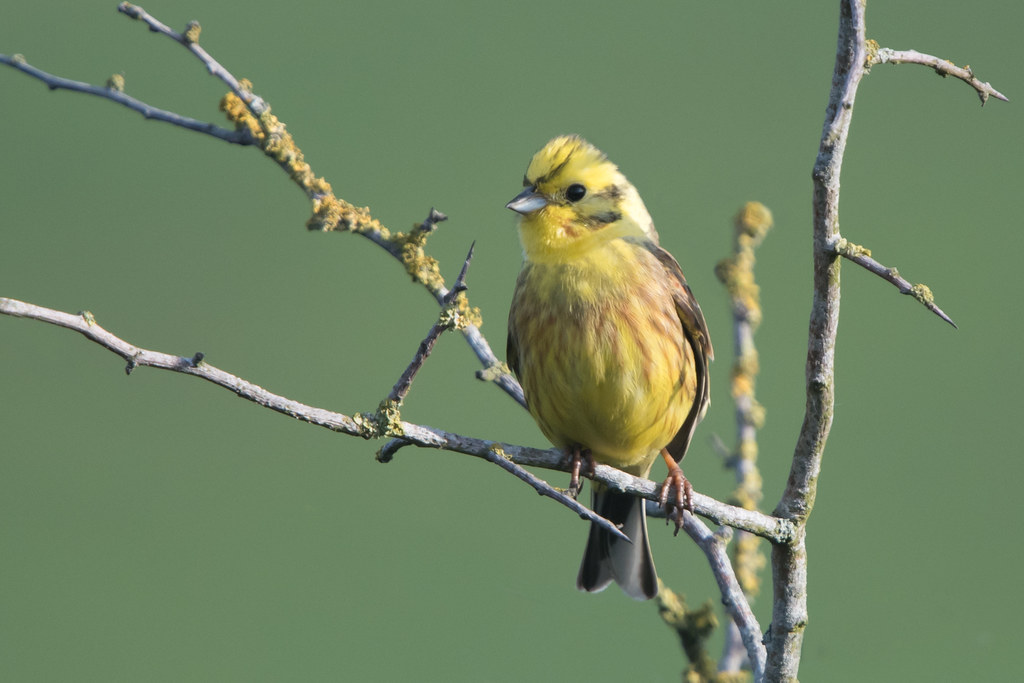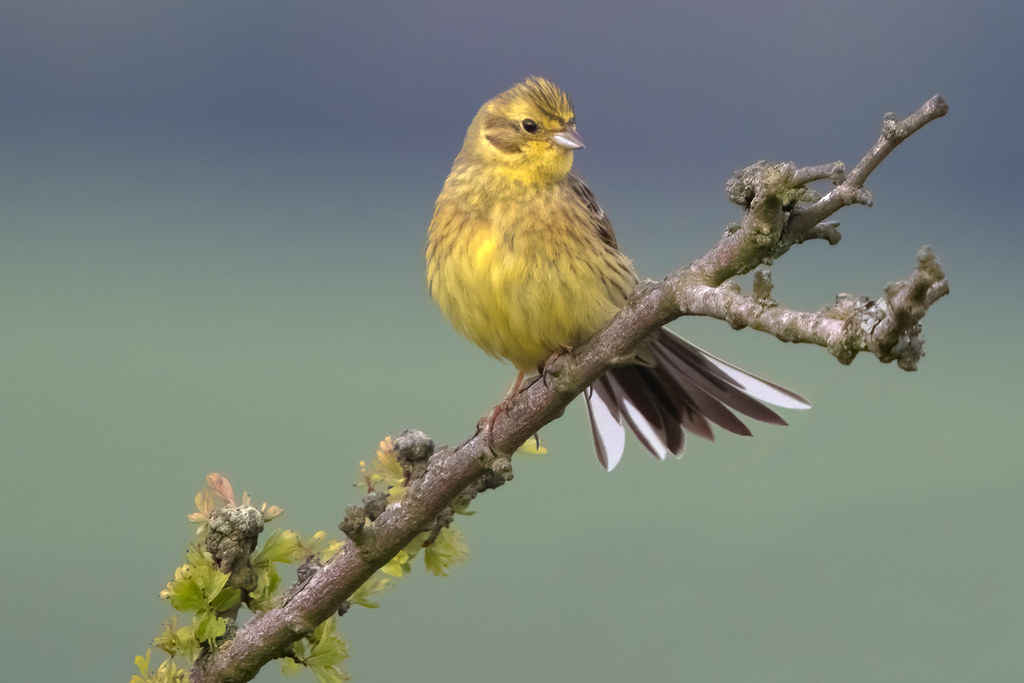
Tim writes: Yellowhammer was one of the first bird songs that I learnt as a child. It is usually rendered “a little bit of bread and no cheese” but only the cheese bit chimes with me. It was Enid Blyton who popularised this rendition of the song in several of her books and poems (eg The Yellowhammer Bird in Enid Blyton’s Nature Lover’s Handbook 1944). But it wasn’t Enid Blyton who first coined it, as thirty years earlier in 1911 Beatrix Potter mentions a bird singing “Little bita bread and-no-cheese!“ in the Tale of Timmy Tiptoes, though she doesn’t mention which bird sang it and it isn’t identifiable from the picture. Another problem is that this story was set in North America with Chipmunks and a Bear, as it’s about a Grey Squirrel, which wasn’t widespread in Britain at that time. I have noticed that Yellowhammers sing their songs at two speeds rather like Reed Buntings. There are definitely singers with fast and slow stutters prior to the terminal cheese, which remains the same. In Reed Buntings the fast singers are unpaired males eager to impress and I would guess that the fast singing Yellowhammers are similarly unpaired.
This is another seriously depleted farmland bird that has been on the red list since 2002 because of a more than 50% decline in population. It usually needs arable (preferably spring-sown) and herb-rich pasture in close proximity. But specialisation in farming means these two habitats don’t occur together very often. But it sometimes can survive where frequently disturbed ground (eg through cattle poaching or farm vehicles) allows arable “weeds” to grow. These were the conditions where I photographed these near my village, where arable is absent, but where livestock had churned up the ground and “weeds” had colonised.

Again, a lovely thought provoking blog. This time about a bird which is still reasonably common around us, to the extent that sometimes they hardly get a second look. The blog stirs an appreciation which perhaps was waning and encourages me to look more attentively enjoy this lovely little bird.
Thank you Tim.